Liferay vs dotCMS
May 23, 2023 | Author: Sandeep Sharma
10
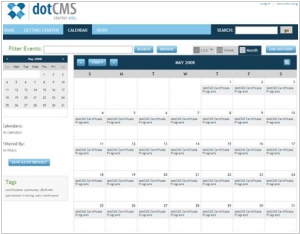
Dotcms is an Open Source Content Management System (CMS), built on leading Java technology and open standards. Take the worry out of hosting your own Content Management System (CMS). DotCMS Cloud allows you to get started quickly and scale rapidly to meet your sites' growth. Allowing you to focus on what matters most, your business.
Liferay and dotCMS are both robust content management systems (CMS) with distinctive features and approaches. Liferay is an open-source CMS that provides a comprehensive suite of tools for building and managing digital experiences. It offers features such as content creation, document management, collaboration, personalization, and integration with other business applications. Liferay focuses on providing a flexible and customizable platform with a wide range of out-of-the-box functionalities suitable for large enterprise deployments.
On the other hand, dotCMS is a hybrid CMS that combines traditional CMS capabilities with headless CMS architecture. It offers features such as content creation, versioning, workflow management, and headless API-driven content delivery. dotCMS places a strong emphasis on developer-friendly customization options and supports the creation of omnichannel digital experiences. It is suitable for businesses that require flexibility and agility in managing content across multiple touchpoints.
See also: Top 10 Website CMS systems
On the other hand, dotCMS is a hybrid CMS that combines traditional CMS capabilities with headless CMS architecture. It offers features such as content creation, versioning, workflow management, and headless API-driven content delivery. dotCMS places a strong emphasis on developer-friendly customization options and supports the creation of omnichannel digital experiences. It is suitable for businesses that require flexibility and agility in managing content across multiple touchpoints.
See also: Top 10 Website CMS systems
Liferay vs dotCMS in our news:
2018. dotCMS Launches dotCMS 5.0 – Developed with ‘NoCode’ Philosophy

dotCMS, a prominent vendor of open-source Java CMS and Customer Experience Management software, has unveiled the latest version of their product, dotCMS 5.0. This update introduces a range of UI/UX features aimed at enhancing the authoring experience. The Edit Mode has been refreshed, and new reporting capabilities have been implemented, along with improvements in search functionality and security measures. Notably, layouts are now directly associated with the page, allowing for convenient modifications without leaving the page editor. The new Workflow Builder enables the creation of multiple workflow schemes per content type, while the Content Type Builder facilitates the creation of content types through intuitive drag-and-drop functionality. The addition of rows, columns, and the ability to rearrange fields simplifies the development of new content types, particularly for forms. Another noteworthy enhancement is the ability to reuse containers multiple times on a single page, reducing the need for numerous templates and facilitating template, layout, and container management. Additionally, dotCMS 5.0 introduces a new reporting module that integrates with Google Analytics, enabling businesses to obtain valuable website insights directly from the dotCMS Dashboard. This reporting module can be customized to display the most relevant insights for individual business requirements, providing a comprehensive visualization of web properties.
2016. Liferay launched Digital Experience Platform
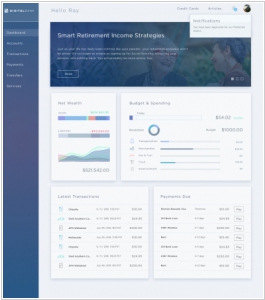
The Open source enterprise CMS provider, Liferay, has introduced its Digital Experience Platform (DXP). This platform is specifically designed to assist companies in creating and managing experiences that facilitate the entire customer relationship. It offers a comprehensive customer view that goes beyond marketing by integrating sales, marketing, support, and service teams. With DXP, companies can develop highly personalized experiences by targeting valuable information, offers, and resources to specific user segments and individuals. It also enables the creation of a unified customer profile that consolidates all interactions and significant data points. Furthermore, DXP provides access to engagement data such as views on video content, click-through rates on targeted materials, community participation, and social metadata.
2016. Liferay launches Digital Experience platform
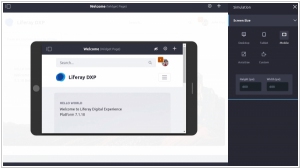
Historically recognized as portal software, Liferay has now ventured into the digital experience market with its latest offering, the DXP (Digital Experience Platform). This strategic shift represents a natural evolution for Liferay rather than a complete departure from its previous trajectory. As stated by Bryan Cheung, the CEO of Liferay, their customers consistently expressed a need for functionalities that went beyond the scope of traditional portal implementations. In response, Liferay would develop or integrate those features, prompting a reevaluation of their position in the market. The Liferay DXP consists of various components, with the portal platform serving as its foundation. The platform includes seamless integrations with numerous backend systems, including CRM, ERP, support, and others. This infrastructure empowers customers to create a wide range of customer experience solutions spanning web experiences, mobile experiences, and even hybrid online/offline experiences throughout the entire customer lifecycle. Please note that while the HTML tags and links were retained, they may not be properly rendered in this plain text format.
2015. Liferay partners with Red Hat to provide an open source portal solution
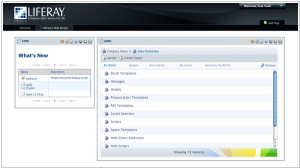
Liferay and Red Hat have joined forces to collaborate on an open-source portal that combines the capabilities of Liferay Portal and Red Hat JBoss Enterprise Application Platform (JBoss EAP). This product specifically targets companies seeking open-source options with enterprise-grade portal solutions. The collaboration also hints at the possibility of integrating with other Red Hat JBoss Middleware products in the future. From a business standpoint, this partnership is intriguing as Red Hat ceased offering new subscriptions to JBoss Portal in February 2015. However, Red Hat will continue to provide support for JBoss Portal until the scheduled end of the current release stream in March 2018. This new venture exemplifies Red Hat's ongoing commitment to the portal market, showcasing their dedication to serving customers in this domain.
2012. Open Text and Liferay create Dropbox clones
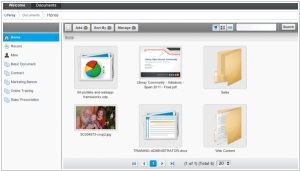
Could you have imagined just a few years ago that esteemed enterprise vendors like Open Text and Liferay, known for developing sophisticated enterprise content management systems (ECM), would emulate a seemingly straightforward consumer service like Dropbox? Surprisingly, it has become a reality. Even within large corporations that heavily rely on ECM, employees are ordinary individuals who desire a seamless working experience. They too seek systems that facilitate their work instead of hindering it, and many of them resort to using Dropbox despite IT administrators prohibiting its usage. As a result, a single solution emerges: to create a similar user-friendly service that abides by the corporate firewall. This very concept underlies the introduction of the new services: Open Text Tempo and Liferay Sync. These services enable file synchronization between desktop folders, web accounts, tablets, and smartphones, facilitating quick file sharing among colleagues while ensuring the files are stored securely on corporate servers. It's that simple.



